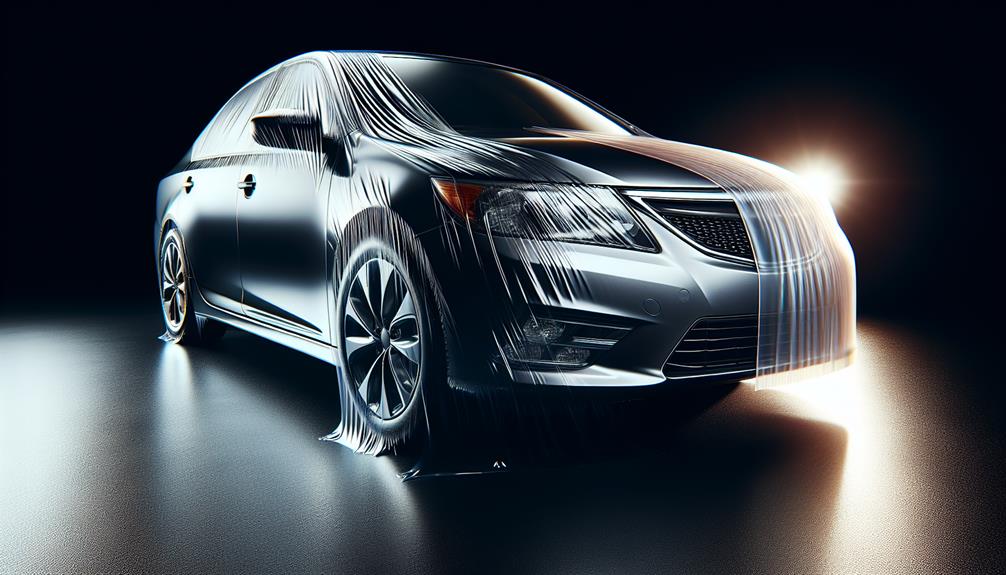How to Choose the Best Paint Protection Film (PPF) for Your Vehicle

In the realm of automotive care, selecting the right paint protection film (PPF) is a critical decision that can significantly impact the longevity and appearance of your vehicle’s exterior. Key considerations include the film’s material composition, primarily thermoplastic polyurethane for optimum elasticity and resistance to abrasions, as well as the film’s thickness, which should ideally range between 8 to 12 mils to provide substantial protective barrier against everyday hazards such as stone chips and road debris. Moreover, evaluating the film’s self-healing properties—its ability to automatically mend minor scratches and swirls—can be a pivotal factor. However, the choice doesn’t end here; the nuances of application techniques and the manufacturer’s reputation are equally vital to ensure that you invest in a solution that truly preserves your vehicle’s pristine condition.
Understanding PPF Materials
Paint Protection Film (PPF) is typically crafted from thermoplastic urethane, a material renowned for its exceptional elasticity, clarity, and resistance to impacts and abrasions. This advanced material ensures that your vehicle not only maintains its pristine appearance but is also shielded from everyday wear and tear. The chemical composition of PPF allows it to self-heal minor scratches and scuffs when exposed to heat, ensuring the film remains clear and effective over time.
In the realm of automotive care, selecting the right PPF comes with the assurance that you are part of a community prioritizing vehicle preservation. Thermoplastic urethane’s top-tier protective qualities make it an ideal choice for those who value durability and aesthetics equally. This film can be applied to any painted surface, providing a virtually invisible barrier that enhances the paint’s color by adding a subtle gloss and depth.
The technical attributes of PPF, such as its thickness, which typically ranges from 8 to 12 mils, contribute to its protective capabilities. The thicker the film, the greater the protection it offers against rocks, bugs, and environmental contaminants. By understanding these fundamental aspects of PPF materials, you can make an informed decision, ensuring your vehicle receives the best possible care and protection.
Comparing PPF Brands and Prices
Now that we understand the fundamental properties and benefits of PPF materials, let’s evaluate the various brands and their pricing to determine the most cost-effective option for protecting your vehicle.
The market for PPF is filled with numerous brands, each offering unique advantages and price points. Among the top-tier brands, 3M and XPEL stand out for their quality and durability. 3M’s Scotchgard Pro series is renowned for its clarity and resistance to stains, typically costing between $900 and $2000 depending on the vehicle size and parts covered.
XPEL’s Ultimate Plus series, on the other hand, is favored for its self-healing properties and also falls within a similar price range. For those looking for a more budget-friendly option, brands like SunTek and LLumar offer PPFs that provide adequate protection at a slightly lower cost, ranging from $700 to $1500.
It’s important to compare the warranties offered by these brands, as they can significantly enhance value. For example, XPEL backs their products with a ten-year warranty, a testament to their quality and durability. Choosing the right PPF brand involves weighing these factors—cost, durability, warranty, and specific vehicle needs.
Joining a community or forum can provide additional insights from experienced users, enhancing your sense of belonging in the vehicle protection community.
In conclusion, the selection of an optimal paint protection film is pivotal for maintaining a vehicle’s aesthetic and structural integrity.
By evaluating the properties of different thermoplastic urethane films, analyzing market-available brands, and considering the economic implications, vehicle owners can secure superior protection against environmental and physical damages.
Engaging in automotive communities further enhances decision-making through shared experiences and expert advice, leading to a well-informed investment in vehicle care.